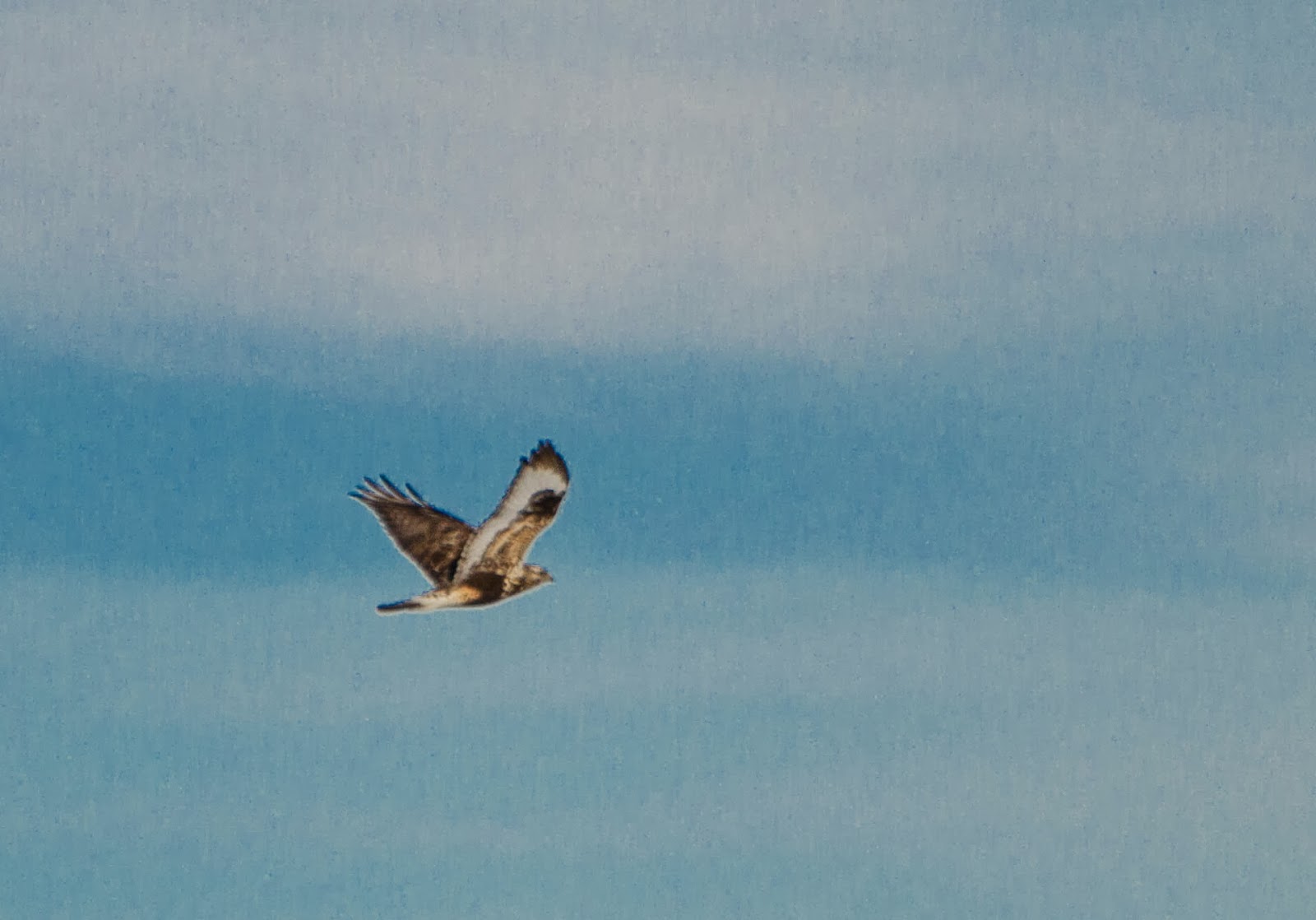At last meeting, we were back in January, learning all about gulls.........but maybe not seeing so many on our gull field trip.
Then our next field trip came around, and oh my. Oh. My.
It was all Rosy-Finches. And unlike the gull trip where we didn't see many gulls, on the Rosy-Finch trip we saw Rosy-Finches. Oh yes we did.
Tons of Rosy-Finches.
And that was a good thing, because I'd been kind of crazy to see Rosy-Finches this winter.
In fact, I was so crazy to see Rosy-Finches that - well before the Rosy-Finch AMB Field Trip - I made some forays into the mountains on my own.
But how can a story of Rosy-Finches in Colorado not start out with a ski day at Keystone and a stop at the feeder there? As we got off the lift, I told my ski buddy that I wanted to check out the birds at the feeder. "Oh, it's just some sparrows", said the unwitting and non-birding buddy. So I skied him over to the feeder (so conveniently right on trail this year, instead of behind the patrol shack), and explained that we were seeing all three varieties of Rosy-Finches: Brown-capped and Gray-crowned and Black. I was able to point out the birds, but somehow I had neglected to bring a real camera with me, so it remains an undocumented sighting.
Then on a sunny Sunday morning, I made my way to the much vaunted Fawn Brook Inn in Allenspark to see if I might score a Rosy-Finch or two there.
The feeders at the inn (God bless the owners who keep the feeders stocked in the winter, even if the inn isn't open) made a veritable oasis for bird activity. There were Evening Grosbeaks and House Finches and chickadees (both Mountain and Black-capped) and Pine Siskins and both Downy and Hairy Woodpeckers and Steller's Jays and nuthatches and Dark-eyed Juncos by the score and all kinds of birds partaking of the goodness there. A flock of crows circled overhead, and a Common Raven flew in and showed them who was boss.
The bird started on the feeder and hopped down on the snow, completely oblivious to me, sitting there in the parking lot, with my car as a blind.
Have I said God Bless the Fawn Brook Inn?
On another morning, I found myself at Red Rocks Park, watching the feeders at the Trading Post. I was there solo, and there were other birders there, mostly newbies (which is still how I view myself, FWIW). They told me that they'd seen a candidate for a Rosy-Finch, but they were not sure. Maybe I could help find it again? This was a high order, given that I have barely any experience with the birds. But you have to try. What would you be if you didn't try?
And a Rosy-Finch showed up, in the snow. Sometimes, magic happens.
The next time I went out looking for Rosy-Finches was with my birding foursome. This is a group of birders who have taken me under their wing (so to speak, and God bless them everyone), and we've become a regular birding group. We started out at Red Rocks, where, on this morning, there were no Rosy-Finches, just some very cooperative Western Scrub-Jays.
So we left Red Rocks, and went high up on Squaw Pass, where we found some Mountain Chickadees........
.....and distant Rosy-Finches on feeders. But but it was snowing hard, and the birds were a long way away, and very high in the sky, and there were no photo opportunities. It takes a certain kind of person to bird in this weather.......in the mountains.......in the snow.......trying to find the avian life way up high.......
Finally the AMB class had a field trip to once again try for the Rosy-Finches. We started at Red Rocks again, and then visited feeders at two mountain homes, and voila! Rosy-Finches at both! Our first stop, the place on Conifer Mountain, was teeming as a flock of Rosies flew in and started to feed. I studied the birds with my bins, and was just thinking about taking some photos when a Sharp-shinned Hawk arrived and spoiled the party.
So we headed higher - back over to the feeders on Squaw Pass. And it turned into Rosy-palooza. We had all three species of Rosies here, and oh what a huge flock! We were a long way from the feeders, and the Rosies were skittish; they did not present great photo opps, but my oh my, the behavior and the flocking and the sheer volume of birds. We figured there were at least 800 finches in the air. Quite an amazing sight.
 |
| Not a great photo but look closely at the density of the Rosies - there are at least 60 in this small section of the tree. |
My oh my oh my. Everything is indeed coming up Rosy.





















































